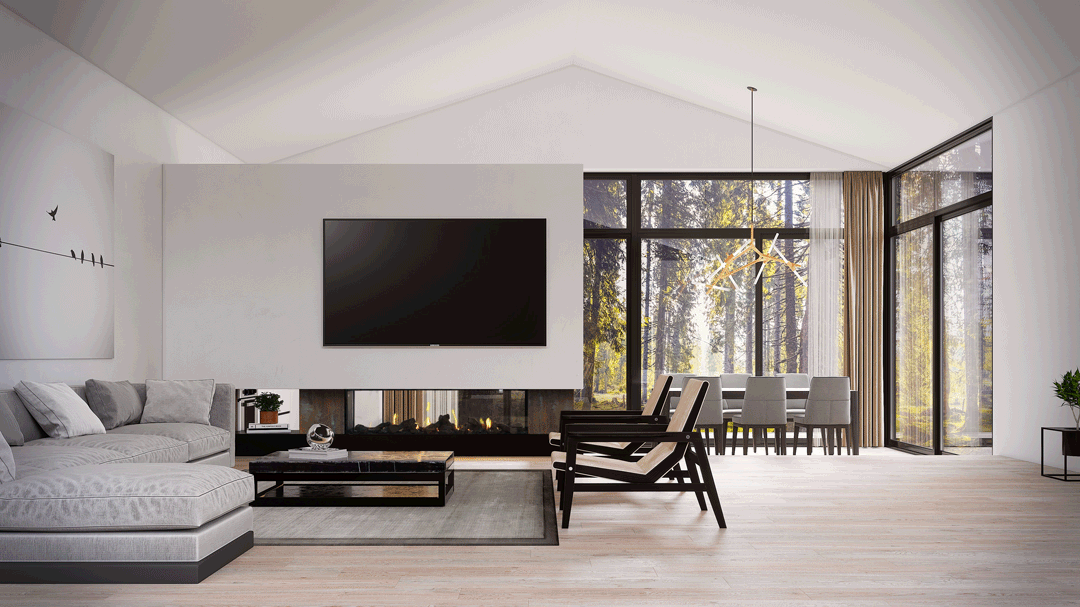- FeaturingSpartherm Corner Wood fire, Spartherm Double Wood fire, Escea DX1000 & Escea DF960
- FeaturingSpartherm Corner Wood fire, Spartherm Double Wood fire, Escea DX1000 & Escea DF960
The right fireplace is more than just a heat source: it’s the heart of your home. The place where friends and family gather and reconnect. The place where you lie on a cosy rug and read on a lazy rainy Sunday.
It’s also a major long-term investment, so you want to be thoughtful and thorough in your approach to purchasing a new one. But with the myriad of choices out there, how do you work out which is the best for you? Here are five questions to consider before making the leap.

1. How do you live?
The big question when it comes to fires is usually, gas or wood? But in reality what you really need to ask yourself is: how much spare time do you have?
For the busy household a gas fire is the obvious choice, as it’s low-maintenance and efficient with the convenience of instant heat. You control the temperature through a remote, keeping the heat consistent without even thinking about it. There are also apps on the market, such as Escea’s Smart Heat that allow you to turn on your heating before you come home.
Wood-burners, on the other hand, are more work. For some people the ritual of kindling the real flame is worth it; it’s part of the appeal. The fireplace also might be a secondary heat source for you, making maintenance less of an issue.
2. What do you want it to do?
Seems like a dumb question, but stay with us. Do you want it to heat one room, two rooms, or more? Both wood and gas fires can be double-sided and heat more than one room. And gas fires also have multiroom capability, allowing you to duct heat to other rooms.
Maybe heating isn’t even your priority and you’re looking to add a low-heat fire mostly for ambience and a focal point? There’s one for that, too.


3. What’s your budget?
The cost of a new fireplace takes in a few factors – fire, installation and ongoing running costs all need to be considered. The good news is there is a solution for all sizes. If you’re on a budget, try to work with what you’ve already got. Replacing like with like is the easiest (and cheapest) way to go. For example, if you have an existing fireplace cavity, use it to install a new fire rather than start from scratch.


4. What about energy use?
Both wood fires and gas fires have their selling points when it comes to energy use. Yes, wood is a renewable energy source, but modern gas fires don’t waste heat. They use a closed combustion system so the heat that they create goes into the room, not up the chimney.
When researching fires, look for the energy rating, emission levels and ‘clean burn’ factor (to minimise atmospheric pollution). And don’t forget to take into consideration the size of your home, to match the heat output and avoid waste.
5. What’s your design style?
Now that we’ve got the practical questions out of the way we can focus on the fun. What do you want it to look like? Are you looking for a fire that makes a statement or something so subtle and sleek that it blends into the room unobtrusively? Do you want it to go into a space so surprising that it defies logic?
Think about the design aesthetic you want to achieve in the living area as a whole, and then work the fire in. Search Pinterest and magazines for inspiration and create a moodboard to help you achieve your vision.
Our DX Series is no longer available in Australia. Please explore the Escea range here.










